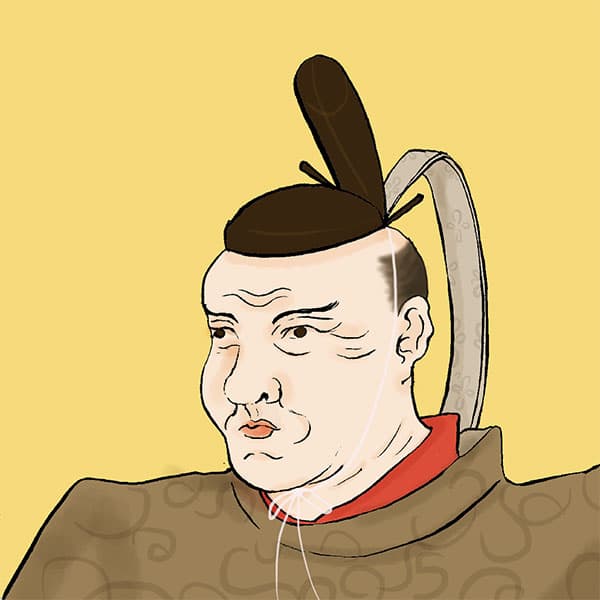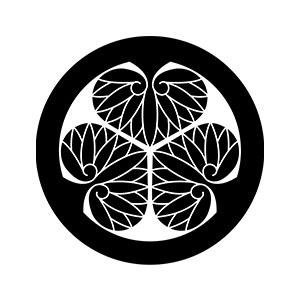- Matsue domainRuled by the Echizen Matsudaira family
- The Matsue domain was ruled by three families: the Horio family, the Kyogoku family, and the Echizen Matsudaira family. However, the Horio family and the Kyogoku family had the misfortune of becoming extinct one after another, and the Matsudaira family's rule was by no means stable. The Matsue clan

Matsue CastleMatsue City, Shimane Prefecture
- spring
- summer
- autumn
- winter
- TOP
- China
- Shimane Prefecture
- Matsue Castle
| Tenshu | Existing castle tower|National Treasure Gojo |
|---|---|
| Other name | Chidori Castle |
| castle construction | 1611 |
| address | 1-5 Tonomachi, Matsue City, Shimane Prefecture |
| telephone number | 0852-21-4030 |
| Opening hours | 8:30-18:00 (Reception until 18:00) |
| closing day | Open all year round |
| Admission fee | Adults 680 yen / Elementary and junior high school students 290 yen |
- Access to Matsue Castle
- About 10 minutes by bus from JR Matsue Station.
HISTORYHistory of Matsue Castle, the only existing castle tower in the Sanin region
Matsue Castle was built in 1611 and is one of only 12 castle towers in existence in Japan. There is a theory that the castle got its other name, ``Chidori Castle,'' because it had a decoration called ``Chidori Gable'' when it was built. Let's take a look at the history of Matsue Castle.
- Matsue Castle before the Edo period
- Matsue Castle is said to have its origins in Suetsugu Castle, which was built during the Kamakura period by a man named Sasaki Tanekyo, who served as the guardian of Izumo and Oki. Mr. Sasaki later called himself Suetsugu, hence this name. Suetsugu Castle changed hands many times during the Sengoku period, among feudal lords of the San'in region such as Amago, Ouchi, and Mori. When Mr. Tadashi was given 240,000 koku in Oki and Izumo, it became the property of Mr. Horio. Mr. Tadashi Horio originally entered Gassan-Tomida Castle, but since this castle was a mountain castle, it was not suitable for forming a castle town, so he decided to build a new castle on the site of Suetsugu Castle. This became Matsue Castle.
- Matsue Castle in the Edo period
- Tadashi Horio received permission from the Edo Shogunate in 1603 to begin construction of Matsue Castle with his father, Yoshiharu Kajio. There is a theory that at this time, the father and son had a divided opinion as to where to build Matsue Castle, and they could not reach a consensus until the end. In the end, the current location was chosen by Tadashi Kajio to build the castle, but in 1604, Tadashi took a break at the young age of 27. Tadauji Horio was succeeded by his eldest son Tadaharu Horio, but since he was young, his grandfather Yoshiharu Kajio became his guardian, and Matsue Castle was completed in 1611.
Furthermore, Yoshiharu Kajio passed away in June of the same year, and Tadaharu Horio also passed away in 1633 without producing any legitimate children. Therefore, Mr. Kajio became the third generation to become Kaiki. After that, Tadataka Kyogoku was transferred from the Obama domain in Wakasa Province and built the Sannomaru of Matsue Castle, completing the current Matsue Castle.
It is said that Matsue Castle at this time was given the other name ``Chidori Castle'' because it had a decoration called a plover gable. During a survey in 2016, four traces of what appeared to be holes where ``chidori gables'' were installed in the castle tower of Matsue Castle were found. This suggests that the illustration of Matsue Castle's castle tower, which has a five-fold exterior, in the Izumo Province Matsue Castle Illustrated Map, which is believed to have been drawn between 1644 and 1648, may not have been an exaggeration. Furthermore, the current castle tower of Matsue Castle is four-tiered and has a ``pillar gable'' instead of a houndstooth gable. There is a record that the castle tower of Matsue Castle underwent major renovations between 1738 and 1743, and at that time, the shape of the castle tower was significantly different from when it was built. There is a possibility.
Tadataka Kyogoku, who was transferred to the province, also had no heirs, so when he died of illness in 1637, the Kyogoku family became extinct. Later, in 1638, Naomasa Matsudaira was transferred from the Matsumoto domain of Shinano Province, and the Matsudaira family continued to rule the Matsue domain until the Meiji Restoration. - Matsue Castle after the Meiji era
- When feudal domains and prefectures were abolished in 1871, Matsue Castle was abandoned and all the buildings were sold to the private sector for 4 to 5 yen at the time. The castle tower was also scheduled to be sold for 180 yen, but when wealthy farmer Motoemon Katsube and former samurai Gonpachi Takagi donated the same amount to the government, the castle tower was actually purchased and the castle tower was decided to be preserved. Later, in 1889, the then prefectural governor Yasushi Kagoteda organized the Matsue Castle Castle Landscape Maintenance Association, and the castle tower began to be protected throughout the prefecture.
In 1927, the Matsudaira family, which owns the land on which the castle tower stands, donated the land along with the castle tower to the prefecture, and it was opened to the public as a park.
In 1935, it was designated as a national treasure (currently an important cultural property) based on the National Treasure Preservation Law of the time. The castle tower was temporarily designated as an important cultural property due to the enactment of the Cultural Properties Protection Law in 1950, but in 2015, when the castle tower was completed, the After the "prayer tag" was rediscovered, it was once again designated as a national treasure.
After that, Matsue Castle reached the end of the Pacific War without being attacked by air raids, and in 1950, major repairs were carried out on the castle tower, and in 1960, Honmaru Ichinomon and Minami Tamon were completed. section has been restored. In the Heisei period, buildings that had been demolished in the Meiji period were restored one after another, including the Corridor Gate (Chidori Bridge), the Kitasomon Bridge at the bottom of the Ninomaru, the Ninomaru south turret and wall, the middle turret, and the Taiko turret. In 2006, it was certified as one of Japan's 100 Famous Castles.
Currently, the inside of Matsue Castle's castle tower is open to the public, and you can see every corner of it as it was during the Edo period. Also, on January 1st, a popular event is held every year where you can watch the first sunrise from the castle tower, although it is limited to 50 people. In addition, various events are held throughout the year, such as the camellia festival and the castle festival that coincides with the blooming of cherry blossoms, making it the center of Matsue tourism.
Read biographies related to Matsue Castle
- Naomasa MatsudairaSuccessful stock who played an active role in Osaka no Jin
- The late Muromachi period was a time of war and turmoil, also known as the Sengoku period, which was compared to the history of China. Tokugawa Ieyasu brought an end to this era. Supported by many retainers, Ieyasu established the Edo Shogunate and became a ruler of Japan. As Ieyasu's grandson, he played an active role in the Osaka Siege.

History of the Matsue Domain, whose domain office is Matsue Castle
| Domain office | Matsue Castle |
|---|---|
| old area | Matsue, Izumo Province |
| stone height | 186,000 koku |
| Fudai/Tozama | Parent clan |
| main lord | Horio family, Kyogoku family, Matsudaira family |
| Estimated population | 300,000 people (first year of the Meiji era) |
After Tadataka Kyogoku died of illness, Naomasa Matsudaira, a cousin of the shogun Iemitsu Tokugawa, entered the domain and the Matsudaira family continued to rule. Harusato, the seventh lord of the domain, is known as a great ruler who promoted reform of the domain's administration.
Matsue Castle, a national treasure and the "Chidori Castle" of Matsue, the city of water
Matsue Castle, a national treasure located in Matsue City, Shimane Prefecture. It is one of the 12 remaining castle towers, and is called "Chidori Castle" because of its gabled roof that resembles a plover spreading its wings. In recent years, a theory has emerged that the name comes from the roof decoration called "Chidori Gable" that was included when the castle was built. Here we will introduce the charms of Matsue Castle.

- History of Matsue Castle
- Matsue Castle is a flatland castle built in 1611 (Keicho 16) during the reign of Horio Tadaharu, the second lord of the Matsue domain, with permission from the Edo shogunate. The first lord, Horio Tadauji, moved into Gassan-Toda Castle in Yasugi, Shimane Prefecture, but found it difficult to govern and decided to build Matsue Castle instead. He died suddenly midway through the construction, so his father, Horio Yoshiharu, became the guardian of Tadaharu, who succeeded him at the age of six, and proceeded with the construction of the castle. Later, as Tadaharu had no successor, the Horio clan died out and was succeeded by the Kyogoku clan. Matsudaira Naomasa then moved into the castle, and the Matsudaira clan served as lord of Matsue until the Meiji era.
Matsue Castle was designated a National Treasure in 1935, but due to changes in the criteria for designating National Treasures, it was changed to an Important Cultural Property. It remained an Important Cultural Property for a long time after that, but in 2012, a prayer tablet was discovered at Matsue Shrine near the castle tower, which led to the completion date of the castle tower being revealed. It was redesignated as a National Treasure in 2015. - Highlights of Matsue Castle: 1. The Plover-like Keep
- The castle tower of Matsue Castle is a four-tiered, five-storey structure with one basement floor, and most of it is covered with black "rain cover boards." The gabled roofs on the east, west, north and south sides, which gave it the name "Chidori Castle," are very beautiful.
The top floor is called the "Tengu Room" and is surrounded by handrails in a watchtower style that allows worship on all four sides. Two carved copper-plated shachihoko are displayed on top of the castle tower, and they are the largest wooden shachihoko still standing in Japan.
Matsue Castle was built during the castle-building rush in the early Edo period, but due to a shortage of timber it was not possible to obtain a large central pillar, so the castle tower was supported by short, continuous pillars. Of the 308 pillars in the castle tower, 96 are continuous pillars.
Matsue Castle was built in the early Edo period, when warfare had calmed down, but the castle still had many war-prepared features, such as stone-dropping structures and gun slits. Underground, surrounded by stone walls, there is a well that was built in anticipation of a siege. The only well inside the castle tower that still exists is the one at Matsue Castle. It's a rare sight. 


- Matsue Castle's highlights ② Stone walls
- Sixty percent of the stone walls of Matsue Castle are made using uchikomihagi, a method of stacking stones with small gaps between them. In addition, you can see natural stones piled up in nozura-zumi style.
The stone walls of Matsue Castle were built by the famous stone wall building group, Anō-shu. There are various markings on the stone walls, such as pentagrams and fans, which were used as markers during the construction of the castle, so it's fun to try to find them.
The 13m-high stone wall of the "Umadari" is an impressive sight. It is the highest wall in Matsue Castle, and the gaps in the wall at the top make it possible to shoot at enemies with guns and arrows.
Furthermore, it is said that there were parts of Matsue Castle's stone walls that never quite fit together no matter how many times they were built, and there are many legends of human sacrifices and curses here. 


- Highlights of Matsue Castle 3: The "heart spot" of matchmaking
- Shimane Prefecture is famous for Izumo Taisha Shrine, which is known for its love-matching facilities, but Matsue Castle also has a love-matching spot. That spot is a heart-shaped stone. It is located in the stone wall on the left side of the stairs leading to the castle tower (Main Hill), and is popular among women as a secret love-matching spot.
Additionally, the pillars on the first floor of the castle tower have heart-shaped grains on them, which have become popular with word-of-mouth reviews as being good for finding love.
On the upper level of Ninomaru is Matsue Shrine, where Matsudaira Naomasa and other people are enshrined. These votive plaques are heart-shaped and are used to pray for love. - Highlights of Matsue Castle #4: Retro architecture "Kounkaku"
- Kounkaku was built by Matsue City in 1903 as the Matsue City Crafts Exhibition Center. It is a gorgeous building built to serve as the residence of Emperor Meiji, and is a designated tangible cultural property of Shimane Prefecture.
The pale green, two-story wooden building in a pseudo-Western style has a tiled roof and a mysterious atmosphere that blends Japanese tastes. The contrast between the Western-style colonnade and the bright red carpet is beautiful, making it a popular retro photo spot. At the coffee shop inside, "Kamedayama Coffee Shop," you can take a break while enjoying the classical atmosphere. - If you're touring Matsue Castle, leave it to the Musha Guide
- At Matsue Castle, there are "Matsue Historical Guides" dressed as warriors who will show you around Matsue Castle under the motto "The easiest castle guide in the world." Some tours are available on the day, so check the website. However, please note that tours may be canceled during the heatwaves of July to September due to clothing restrictions.
- Recommended photo spots at Matsue Castle
- The best place to take photos of Matsue Castle is Honmaru Square. In spring, the cherry blossom festival is held here, and the contrast between the cherry blossoms and Matsue Castle is beautiful. We recommend taking photos in the morning because of the lighting.
Kounkaku is also a perfect photo spot with its pale green exterior and retro interior. We recommend taking photos with the red carpeted staircase landing and the windows and pillars on the second floor in the background. 



- WriterNaoko Kurimoto(Writer)I am a former travel industry magazine reporter. I have loved history, both Japanese and world history, since I was a child. I usually enjoy visiting temples and shrines, especially shrines, and often do ``pilgrimages to sacred places'' themed around historical figures. My favorite military commander is Ishida Mitsunari, my favorite castle is Kumamoto Castle, and my favorite castle ruins is Hagi Castle. My heart flutters when I see the ruins of battle castles and the stone walls of castle ruins.


























